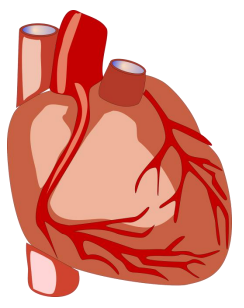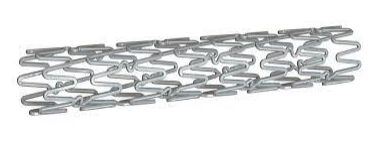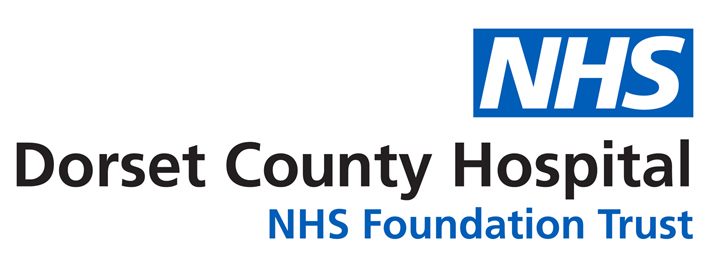Coronary Angiography +/- Percutaneous Coronary Intervention (PCI)
What is a coronary angiogram?
A coronary angiogram (also often called an angiogram or cardiac catheterisation) is a test that is used to look at the main arteries (coronary arteries) which supply the heart with fresh blood and oxygen.
A coronary angiogram is a special type of x-ray that will show your cardiologist the exact location and condition of any narrowed areas in your coronary arteries.

Why do I need one?
A coronary angiogram can be used to help diagnose heart conditions and help plan future treatments. You may need this test if your cardiologist thinks that you have angina. Angina occurs when the blood supply to your heart muscle is reduced. This is often caused by a build-up of fatty deposits on the artery walls, which causes a narrowing in one or more of your coronary arteries. This is known as coronary artery disease.
Angina usually presents itself as pain or discomfort in the chest, but can radiate to the neck, jaw and arms. It can also cause shortness of breath. These symptoms usually occur during heavy physical activity and are relieved after a few minutes of rest.
Nearly half of patients who experience Angina have Non-obstructive Coronary Arteries (ANOCA). This umbrella term is used when the ‘main’ coronary arteries are normal or have minimal disease that does not explain the symptoms experienced by the patient. This group of patients may then undergo assessment for microvascular angina or Vasospastic angina. See below for more information about these assessments.
What are the benefits?
Sometimes cardiologists cannot diagnose coronary artery disease unless a coronary angiogram is performed. Therefore, the angiogram is essential for determining the correct treatment plan. If narrowing of your coronary arteries is found, you may need to have a further procedure called a percutaneous coronary intervention (PCI) to insert a stent, which is a small device that opens up the blood vessels. The angiogram may also show that your condition can be managed with medication, or that an operation, such as a Coronary Artery Bypass Graft (CABG), may be required. However, medication is always used to prevent further narrowing of the arteries and to reduce the risk of a heart attack.
If a Percutaneous Coronary Intervention (PCI) is necessary, this would be performed on the same day.
What is PCI?
A PCI, in conjunction with medication, is one of two methods used in the treatment of coronary artery disease, the other being Coronary Artery Bypass Grafting (CABG).
PCI improves the blood supply to the heart muscle when narrowing and blockages are present within the coronary arteries and therefore relieves symptoms of angina.
What to expect
You will be asked to attend a pre-assessment clinic prior to your procedure. At this appointment a nurse will carry out blood tests, blood pressure checks and get a medical history from you. This helps medical staff identify any potential problems in advance and take steps to sort them out beforehand. You will also be given more details about the procedure, including preparation and aftercare.
On the day of the procedure, you will be admitted to our day ward within the Cardiology Department where the nurse caring for you will undertake some pre-procedure checks, including blood pressure, an electrocardiogram (ECG) to check your heart’s rhythm and the insertion of a small tube (cannula) into the vein in your arm. The tube is sometimes used during the procedure to give you medication. The angiogram is carried out in a room called a catheter lab, which looks like an operating theatre, and usually takes about 30 minutes. If you require any further investigation of a narrowing, or insertion of a stent, this will add more time on to the procedure.
How is the procedure performed?
You will be taken into the catheter lab and asked to lie flat on a table. A member of the team will attach you to a heart monitor.
During the procedure, a small flexible tube, called a catheter, is inserted into a blood vessel in your wrist or hand (radial artery) or in the top of your leg (femoral artery). It is done under a local anaesthetic, which will numb the skin where the tube is inserted. You will be awake during the test.
The catheter is then guided through the blood vessel to your heart using an x-ray camera. Once the catheter has reached your heart, the tip of the catheter is positioned into the opening of the artery to be treated. A special liquid dye (also called contrast) is then injected into the coronary artery. The dye is used because it shows up under the x-rays and the doctor can then see if your coronary arteries have become narrowed or blocked.
If a narrowing is identified, then it may be necessary to insert a stent to widen the narrowed section of artery. To do this the doctor will use a very fine wire which is placed across the narrowed part of the coronary artery. Once in position, a small balloon is passed over this wire into the narrowed area. The balloon is gently inflated so that it squashes the blockage (made of fatty tissue and sometime clot) out of the way and widens the artery. Frequently the walls of the artery will recoil once the balloon is deflated; therefore a stent is implanted to keep the artery open.
If a leg artery is used, the procedure will be completed by closing the artery with an Angioseal (a dissolvable plug). If an Angioseal cannot be used, pressure will be applied to the area by a trained member of staff or a special ‘pressure belt’ called a FemoStop. If the wrist artery is used, a pressure band is placed around your wrist and will be kept on for approximately an hour. You will then return to our recovery area where the nurses will do regular checks on your blood pressure and wound site.
What is a stent?
A stent is a metal mesh tube which has a special drug coating on it. The drug is slowly released in to the artery over time. This can help to prevent the artery from re-narrowing. In some cases, further assessment of a narrowed section is required to determine if a stent is required or not. These techniques may include a pressure wire assessment or the use of intravascular imaging,

What is a pressure wire assessment?
A pressure wire is a very fine wire that has a sensor built into it. The pressure wire is placed into the coronary artery ensuring that the sensor is beyond the narrowed section. When there is a narrowing in the artery, the pressure will fall. The cardiologist will then know that the narrowing is enough to reduce the flow of blood through the artery and cause your symptoms. This is then treated by inserting a stent.
What is intravascular imaging?
The imaging techniques which are used at this hospital use ultrasound or infrared light to create an image from the inside of the artery. The images taken give the cardiologist very detailed information about the inside of the artery and a decision about your treatment can then be made. If it is seen that the artery is tightly narrowed, this is treated by implanting a stent.
What is rotablation?
Sometimes the fatty deposits which have built up in the coronary artery can be particularly hard. This is often due to calcium build-up. Rotablation is the use of a tiny drill passed over a very fine wire. The drill is diamond tipped and is rotated very quickly inside the narrowed artery to smooth away the hard calcium. It is powered by an air compressor and sounds a bit like a dentist drill. The calcium debris is smaller than a red blood cell and washed away in the blood stream. Once rotablation is complete the cardiologist can use a balloon and stent to widen the artery.
What is shockwave?
Shockwave is another piece of equipment that can be used to treat calcium within the coronary artery. It involves passing a small balloon over a very fine wire into the narrowed section. An electrical discharge is then delivered by the balloon which creates a sonic wave, which in turn cracks the calcium. After the modification of the calcium, a balloon and stent can be used to widen the artery. Patients can sometimes get a ‘clicking’ sensation in their neck when we use this.
What are the risks of the procedure?
Complications of this procedure are rare; however, because it is invasive, they can happen:
- Bleeding from the artery used for access (leg or wrist). This will be monitored closely by the nursing staff and treated by applying pressure
- Reaction to the dye. This is rare. You will be encouraged to drink plenty of fluid following the procedure to help ‘flush’ the dye out of your system
- Irregular heartbeat, heart attack and stroke. This occurs in less than one in 1000 people. Serious complications may result in death
- Occasionally scar tissue forms inside the stent/s, which causes narrowing and causes your angina symptoms to return. This is called ‘restenosis’. This is rare and can be treated
- There is a small risk of a blood clot forming which could block the stent/s. To avoid this, please continue taking your anti-platelet medication (Aspirin and Clopidogrel or Ticagrelor) for 12 months after the procedure, unless told otherwise by your doctor.
Microvascular assessments
If you are found to have normal coronary arteries or minimal coronary artery disease, the cardiologist performing your procedure may choose to go on and assess for microvascular dysfunction and/or coronary artery vasospasm.
Microvascular dysfunction affects the many small blood vessels that supply the heart with blood and oxygen. When these blood vessels are unable to provide enough oxygen to the heart muscle it causes angina. These blood vessels are too small to have stents inserted and they are not visible under x-ray.
A wire, like that of a pressure wire is placed into the coronary artery. This wire has a built-in sensor, which measure resistance within the artery. This is done at rest and then using a medication to stress the heart. The team in the cath lab will inform you when this medication is going to start as you may experience symptoms of breathlessness and possibly some discomfort or tightness in the chest. These symptoms will resolve once the medication stops.
If the measurement of resistance is significant then a diagnosis of microvascular dysfunction may be made, and management of your symptoms will be with medications.
Vasospastic angina happens when one or more of your coronary arteries supplying blood and oxygen to your heart suddenly goes into spasm and narrows. To test for this, you will be attached to some further monitoring and the cardiologist will then inject a chemical called Acetylcholine down the catheter tube and into your coronary artery.
The side effects of this medication are chest pain, which is treated with painkiller and a medicine called ‘nitrate’ which helps the artery to relax again, and in rare cases your rate can slow. This can be managed with medication to speed it up again or if required a machine to deliver a current to the heart to make it beat normally.
If there is evidence that the artery goes into spasm and narrows, then this can provide you with a diagnosis and treatment can be commenced with medications to relax the arteries and allow more blood flow through.
What happens after the procedure?
- You must have someone stay with you at home for the first 24 hours following the procedure if you are discharged the same day
- You will be expected to refrain from any physical activity for the first week after the procedure
- Your Cardiologist will advise you when it is safe to return to work
- You may not be able to drive for up to one week, depending on the procedure performed.
What are the alternatives?
Other less invasive tests can be performed such as MRI scans and CT scans; however, the specialist has recommended that a coronary angiogram is considered to be the best test to investigate your symptoms or condition.
Medication is always used to prevent further narrowing of the arteries, whether a PCI is recommended or not, as this helps to reduce the risk of a heart attack. Sometimes however, your cardiologist may recommend a Coronary Artery Bypass Graft (CABG) operation if a PCI is not successful or as a better long term solution for you as an individual.
Please discuss any concerns that you may have with a member of the cardiology team.
Further information
You will be able to ask questions during your pre-assessment appointment. However, if you have an urgent query you may contact the Cardiology Department on 01305 255887.
About this leaflet
Author: Laura Starr, Matron, Cardiology Department
Written: February 2020
Approved and updated: April 2021, February 2025
Review date: February 2028
Edition: v2
If you have feedback regarding the accuracy of the information contained in this leaflet, or if you would like a list of references used to develop this leaflet, please email patientinformation.leaflets@dchft.nhs.uk
Print leaflet